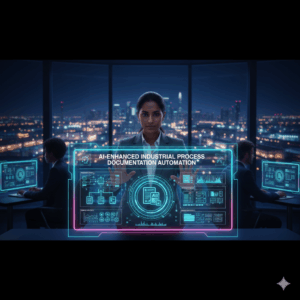Are Artificial Intelligence Doctors Capable of Solving the Problem of Healthcare in Rural Areas?

Are Artificial Intelligence Doctors Capable of Solving the Problem of Healthcare in Rural Areas?
There is a common thread that binds people together even in the most isolated villages, mountain communities, and arid farmlands throughout the world: access to medical care is difficult to get. Many rural populations may not have access to even the most basic medical facilities, much alone qualified medical professionals or experts. Clinics are located a great distance away. Ambulances are in short supply. In addition, the price of even a basic checkup might seem to be out of reach for a lot of people.
However, what if the answer is not more doctors but rather higher-level physicians? If the next frontier in medicine is not found in overcrowded hospitals, but rather in silicon chips, neural networks, and diagnostics driven by artificial intelligence, what would that mean?
The rise of artificial intelligence physicians, who are intelligent systems that have been taught to diagnose symptoms, prescribe therapies, interpret medical imaging, and even talk to patients, is one of the most promising and contentious transitions associated with the ongoing transformation of every area of life brought about by artificial intelligence. Additionally, this move has the potential to revolutionize healthcare in rural areas.
Why Healthcare in Rural Areas Is in Urgent Need
First things first: let’s have a grasp on the issue before we dig into artificial intelligence. In rural locations, there is a deadly mix of variables that contribute to the problem: inadequately financed clinics, overworked medical personnel, inadequate infrastructure, and an excessively lengthy travel distance. It is possible for a single physician to be accountable for thousands of patients in various regions of the globe, while specialists are almost nonexistent in some regions.
Higher mortality rates, chronic illnesses that are not controlled, cancer diagnoses at a later stage, and avoidable deaths from disorders that might have been treated are some of the repercussions that are real and absolutely tragic. These communities need not only an increase in the number of medical professionals, but also a more expedient diagnosis, individualized guidance, constant monitoring, and improved access to specialized medical treatment.
The Artificial Intelligence Doctor is arrived.
AI in the medical field is no longer considered science fiction. Already, artificial intelligence is being incorporated into medical facilities and clinics. This includes chatbots that provide answers to health-related concerns as well as algorithms that are able to identify lung cancer in CT scans more accurately than radiologists. However, the potential effect that it may have on rural areas could be far more significant.
Imagine this: a farmer in a rural hamlet downloads an app, talks about his symptoms in his native language, and the artificial intelligence not only listens but understands what he is saying, asks follow-up questions, and provides a preliminary diagnosis. It is possible to notify a distant human doctor about the issue, organize a session of telemedicine, or provide recommendations for neighboring clinics that have resources that are available if one is required.
This is more than simply a convenience; it is a triage practice that can save lives. Artificial intelligence has the potential to assist individuals in obtaining medical assistance before their diseases become more severe, and in many instances, this may be accomplished without the need for costly or time-consuming travel.
Applications in the Real World That Are Already in Use
Already, a number of nations are putting these systems through their paces with great success: Artificial intelligence technologies are being used in rural clinics in India to assist in the detection of diabetic retinopathy. These tools are scanning the eyes of patients using portable devices and identifying high-risk instances.
In order to provide community health workers in Sub-Saharan Africa with assistance with patient evaluations and medication recommendations, artificial intelligence chatbots that have been educated in the local languages are being implemented.
In the United States, businesses are installing kiosks powered by artificial intelligence in rural pharmacies. These kiosks provide customers the ability to check their vital signs, get health checks, and communicate with AI assistants that have been taught to comprehend medical issues. These artificial intelligence technologies do not completely replace human physicians; rather, they expand their coverage, making it possible for a single physician to remotely monitor hundreds of patients while AI takes care of the regular jobs.
Is It Possible to Put Artificial Intelligence in Charge of People’s Lives?
Exactly at this point, the discourse begins to get more challenging. The practice of medicine is profoundly human. There is more to it than simply the statistics; it is also about trust, empathy, and the ability to comprehend nuances. It is possible for a patient to describe symptoms that they are not even aware are significant. A physician is able to recognize subtle body language and can detect worry in a person’s speech. Is it possible for AI to do the same?
Not at this time. On the other hand, AI is fast advancing. In addition to being taught on symptoms and data, machine learning models are also being trained on the tone of voice, facial expressions, and cultural context for each individual. And even while technology may never be able to entirely imitate human empathy, artificial intelligence can nonetheless provide consistency, quickness, and availability around the clock, which are three things that patients in remote areas sometimes lack.
Collaboration, not replacement, is going to be the key, according to the experts. Instead than serving as a substitute for rural health workers, nurses, and community physicians, artificial intelligence should be used as a tool in their hands. It has the potential to lessen feelings of burnout, enhance results, and make excellent medical care more accessible to more people.
Concerns and Obstacles of an Ethical Nature
Obviously, there are dangers involved. When AI is not properly taught, it may provide inaccurate diagnosis. It is possible for biased datasets to provide results that are racist, sexist, or classist. And an excessive reliance on automation may cause the function of local health experts to become less important.
In addition to that, there is the problem of data privacy. It is possible that rural populations might not have a complete understanding of how their health information is kept, shared, or put to use. Companies that are implementing artificial intelligence systems have a responsibility to be open, responsible, and inclusive, particularly when working with potentially vulnerable groups.
Last but not least, there is the possibility of being excluded from internet activities. Not everyone has a smartphone, internet connection that is stable, or digital literacy. If only those who are proficient in technology have access to AI health tools, then those who are the most underserved will be left behind once again.
Taking the Next Step: A Hybrid Approach to Patient Care
It seems probable that the future will be a hybrid approach, in which artificial intelligence will handle the heavy lifting of data collecting, pattern identification, and routine diagnoses, while human physicians would concentrate on providing care for difficult situations, making decisions, and maintaining connections with patients.
To guarantee that artificial intelligence healthcare is ethically taught, locally customized, and disseminated equally, governments, non-governmental organizations (NGOs), and technology corporations need to collaborate. This includes the following:
- Providing training to rural health professionals on how to utilize artificial intelligence technologies
- ensuring interfaces that are culturally appropriate and use several languages
- The protection of patient confidentiality and ownership of data
- Putting in place the necessary infrastructure for telehealth referrals and assistance
- Without a certain, artificial intelligence physicians will not replace rural clinics; rather, they will enhance them.
Expectation in the Machine
The challenge in rural healthcare is not new; but, artificial intelligence provides fresh promise. Intelligent machines may be able to fill the gap in areas where there is a shortage of medical professionals and hospitals are located at a considerable distance. These devices may not be ideal answers, but they may serve as strong bridges.
In the past, the concept of a machine conducting a diagnosis of sickness seemed to be cold and impersonal. Nevertheless, if that computer has the ability to save a life, detect an illness at an early stage, or direct someone toward treatment that they otherwise would not get, isn’t that a very human thing to do?
It will take some time for AI to cure the globe. On the other hand, for millions of people who do not have access to basic medical care, this may be the first checkup they have gotten in years. Moreover, it is a foundation upon which to develop.





